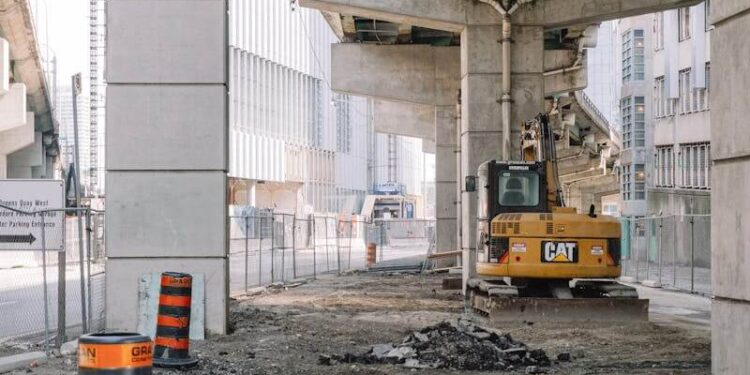The backbone of every thriving industry is smart, future-ready infrastructure. In an era where markets shift fast and technology evolves even faster, traditional build-and-expand models no longer cut it. Companies today need facilities that can grow, adapt, and operate efficiently without constant reconstruction. Smarter infrastructure combines strategy, sustainability, and scalability, turning physical spaces into long-term assets rather than short-term solutions.
When design meets foresight, businesses gain an edge. Energy efficiency, flexible layouts, and digital connectivity are crucial to industrial success. Building with intention means creating spaces that serve current goals while staying ready for what’s next.
Start with Scalable and Flexible Storage Solutions
Every successful industrial setup begins with smart storage. Facilities that can scale easily make it possible to expand production, reorganize workflow, or adjust to new product demands without starting over. The goal is to build flexibility into the structure itself, allowing smooth transitions as the business grows.
One cost-efficient way to achieve that flexibility is to buy shipping containers for modular storage or workspace use. They’re durable, customizable, and portable; ideal for holding equipment, raw materials, or temporary setups during expansion. Using containers keeps costs predictable and allows businesses to respond quickly to shifting operational needs.
Prioritize Energy-Efficient Facility Design
Modern infrastructure isn’t complete without energy awareness built into its design. Efficient lighting, optimized airflow, and smart temperature control systems cut operating costs and make the workspace more comfortable. Energy-efficient facilities reduce bills and also align with sustainability goals that investors and clients increasingly value.
Thinking energy-smart during construction pays off over time. From insulated panels to automated systems that track energy use, such investments quickly return their value through reduced waste and improved efficiency.
Use Sustainable Construction Materials
The push for sustainability in industrial spaces is good for business. Durable, low-impact materials reduce waste, improve safety, and help meet environmental standards that are becoming stricter every year. Recycled metal, eco-friendly concrete, and non-toxic paints are practical choices that last longer and perform better.
Alongside compliance, such choices enhance brand reputation and appeal to partners who prioritize green operations.
Focus on Workforce Accessibility and Safety
Infrastructure that ignores people is incomplete. Designing with the workforce in mind means easier navigation, safer work areas, and better productivity. Proper lighting, clear walkways, and ergonomic layouts create a workspace that feels efficient and safe at the same time.
Safety and accessibility also reduce operational risks. When employees can move freely, equipment is properly spaced, and emergency plans are built into the layout, downtime decreases and confidence rises. A well-designed facility makes every person inside it work and feel better.
Plan for Future Upgrades
Technology never stops evolving, so your facility shouldn’t either. Planning for automation means leaving room, literally and structurally, for new machinery, conveyor systems, or robotics. Installing reinforced floors, modular wiring paths, and flexible layout zones makes future upgrades seamless.
Instead of scrambling to adapt when new technology arrives, plan for it from the beginning. When infrastructure welcomes change, innovation becomes part of everyday operations rather than a costly overhaul every few years.
Adopt Modular Designs for Faster Expansion
Industrial spaces grow best when they’re built to expand easily. Modular construction allows new sections to be added as production increases without interrupting daily operations. Prefabricated components save time on-site and reduce labor costs while keeping build quality consistent.
This approach gives businesses more control over growth. Adding a new wing, warehouse, or office area becomes a planned move instead of a disruptive event. Modular design turns expansion into a smooth step forward rather than a complete rebuild.
Incorporate Waste Management and Recycling Systems
Efficient waste systems support both environmental responsibility and cost control. Setting up recycling stations, waste segregation areas, and on-site processing spaces helps reduce disposal fees and promotes cleaner operations.
When waste management is integrated into the layout, it becomes part of the daily routine instead of an afterthought. Organized systems also help track waste volumes, improve recycling rates, and meet local environmental requirements.
Build Infrastructure That Supports Supply Chain Resilience
Strong supply chain support begins with smart infrastructure design. Facilities that have multiple loading areas, flexible storage options, and optimized traffic flow keep goods moving even when demand spikes.
Creating adaptable logistics spaces allows faster shipment turnaround and minimizes bottlenecks. Reliable movement of materials keeps operations steady and strengthens overall business resilience.
Enhance Connectivity Through Digital Infrastructure
A connected facility functions more efficiently and responds faster to operational needs. Installing sensors, smart controls, and integrated data systems enables individuals to monitor production, track assets, and adjust processes in real time.
Digital infrastructure improves coordination between departments and reduces delays in communication. When systems talk to each other, performance becomes transparent, and decision-making becomes simpler.
Implement Preventive Maintenance Programs
Regular maintenance keeps equipment reliable and prevents small issues from turning into expensive repairs. Scheduling inspections, updating systems, and tracking machine performance extends equipment life and supports steady output.
Digital tracking tools can also alert teams when maintenance is due. This proactive approach keeps downtime minimal and protects investments in machinery and infrastructure.
Plan for Renewable Energy Integration
Installing solar-ready roofs, planning space for energy storage systems, or connecting to local green power sources reduces future energy costs.
Renewable readiness positions a business as forward-thinking and environmentally responsible. It supports operational independence and meets growing sustainability expectations from partners and clients.
Each decision, from storage solutions to digital integration, shapes how efficiently a business grows. When design, sustainability, and adaptability work together, the result is infrastructure that supports progress for years to come.











